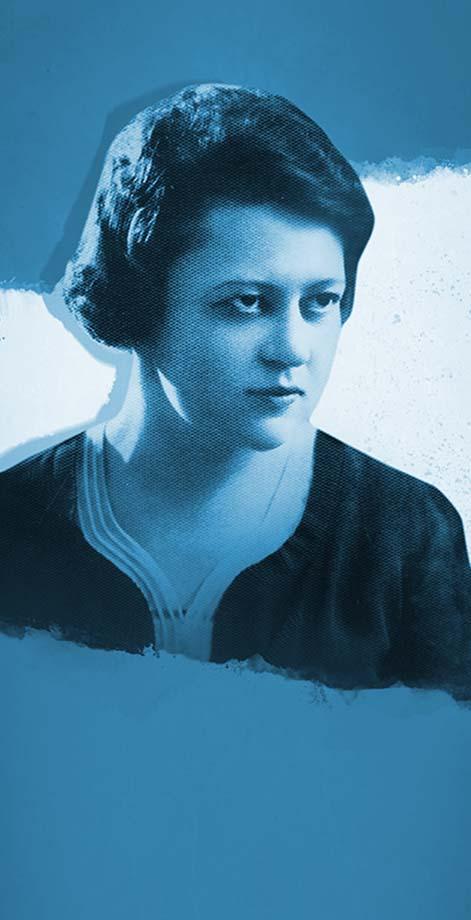
4 I 1900, Burshtyn (today’s Ukraine) — VIII 1942, Lviv Ghetto
Debora Vogel was a poet as well as a literary and art critic writing mainly in Polish and Yiddish. Her experimental works combined poetry and visual arts.
She was born in 1900, in the small town of Burshtyn in Galicia (today’s Ukraine). During World War I, her family fled first to Vienna and later to Lviv where Debora Vogel spent most of her life.German was her language of choice when she began writing, but her first published work was written in Polish. Rachel Auerbach, a writer and advocate of modern Yiddish culture, encouraged her to try her hand at writing in Yiddish, even though it was not spoken at her home. Ultimately, she decided to write in Polish, Hebrew, and Yiddish. She was active in Yiddish literary circles and wrote for Polish-language newspapers. Debora Vogel published essays on poetry, as well as art reviews and poems. She was a friend of the writer and artist Bruno Schulz.
Experimentation was the driving force behind Debora Vogel’s poetry. Written mainly in the 1930s, her poems incorporated both radicalism and minimalism which became the characteristic features of her work. Her poetic experiments combined poetry and visual arts, using a method she referred to as the “white words” technique. She published two volumes of poems Tog-figurn (‘Figures of the Day’, 1930) and Manekinen (‘Mannequins’, 1934), as well as a collection of montages titled “Acacias Bloom” which appeared in two linguistic versions: in Yiddish in 1935, titled Akacjes blien, and, in Polish in 1936, as Akacje kwitną.
In 1932, Debora married Szulim Barenblüth, a Lviv architect and engineer. Their only son, Anshel, was born four years later. When the city was taken over by the Nazis, the family ended up in the Lviv Ghetto, where they were murdered during its liquidation in 1942.